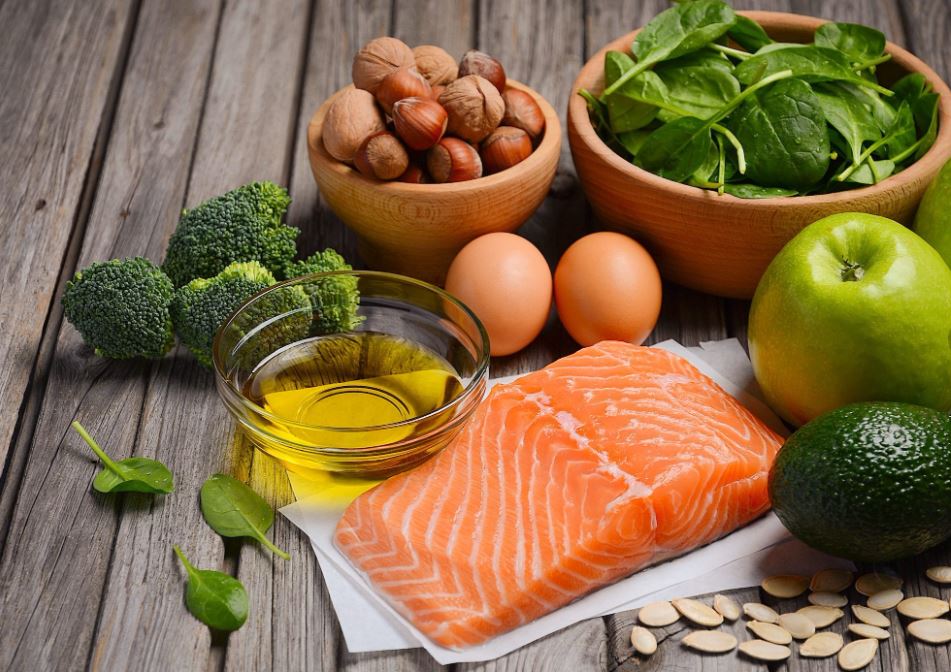
9 foods to keep your body warm in winter
9 foods to keep your body warm in winter
When the winter chill makes us shiver, eating or drinking something warm, besides cozying up in a blanket is our first instinct! It’s that time of the year when all we want to do is snuggle deep into our cozy blankets and keep warm. In winter, our body starts craving for foods that’s warm and make us feel warmer from within. Have we ever wondered how it works? During winter, it is better to consume foods that take longer to digest as the body’s temperature rises during metabolism. Fewer daylight hours also play a major role in cravings.
Here are the foods that you must consume in winter to stay warm:
1. Cereals:
Start your day with oatmeal, porridges and whole wheat preparations. Even though we often crave for pizzas, pastas, it’s better to eat them once in a while as they will not help in keeping our body warm and will only have a temporary effect since simple carbohydrates digest quickly. Moms-to-be and new mommies can have the porridges or oatmeal preparations enriched with vegetables. Kids can be given a whole wheat sandwich or they can also have hot milk with cornflakes or rolls with egg or vegetable stuffing.
2. Soups:
Soups are an excellent option as they contain a good amount of vegetables and keep our body warm inside out. Soups made out of pulses, gourds, barley are good options and can also be a major meal with carbs added in. A dash of spices like cumin, cinnamon, and ginger and there you go as you have just had the healthiest meal of your day. These are very healthy options for moms-to-be. Lactating mothers can also enjoy soup as a midnight snack or evening snack. Kids can enjoy soups as an evening snack after their play time which will fill their tummy and at the same time keep them warm.
3. Fruits:
Fruits that are locally grown during winters often prove to be beneficial. Bananas, strawberries, kiwis, apples, plums, litchis, papaya, custard apple, and pomegranate are some of the best options.
Bananas being a good source of magnesium helps in regulating the body temperature. Kids can be given bananas or dip the same in homemade peanut butter. Moms-to-be can avoid papaya and enjoy the citrus fruits, pomegranates and bananas. Lactating mothers can enjoy all the above mentioned fruits as a snack and preferably during the day. Eat food like fruits and nuts in your winter diet.
4. Dry fruits and nuts:
Almonds, cashews, walnuts are a very good source of good fats and also help in regulating body temperature. Figs, dates, olives are also good options as they are often used in countries that experience severe chills. Dates are excellent sources of iron and a combination of hot herbal concoction with a date will just be what you are looking for. Pregnant ladies can enjoy a fistful of dry fruits in a day.
Lactating mothers can also enjoy a fistful of dry fruits or also have a laddoo made out of it. Kids who enjoy eating dry fruits can also be given a fistful daily. Powdered dry fruits mix can also be added to their milk or cereal mix.
5. Spices
Spices are a great way to maintain thermogenesis. As our Indian cuisine most often includes spices in the preparations, this easily becomes a part of our daily diet. Some of the superstars are ginger, cumin, pepper, sesame, and cinnamon. Ginger can be used in our tea, soup or even during seasoning of any curries. Cumin helps in keeping your body warm for longer periods of time. Hence, be generous in adding cumin to your preparations. Cinnamon powder can be added in salads and hot chocolate or lattes as it enhances flavor and increases metabolism. Pregnant mothers can include spices in their diet soups or normal food preparations.
Kids can be given very minimal spices as they would not find the taste appealing always. It can be added in their meal preparations, soups and milk.
It is better for lactating mothers to avoid spicy foods but they can definitely enjoy cumin water, ginger in the form of dry ginger too. Cinnamon can be added in their milk, but do not overdo any of the spices while breastfeeding. Moderation is key.
6. Meat
For non-vegetarians, meat can be a part of the diet as it raises body temperature during metabolism and is an excellent source of iron and protein. Meat can be included in a pregnant mother’s diet if your doctor allows it. It helps in meeting your iron requirements.
It is completely okay for a lactating mother to include meat after a week of delivering. It is always better to start with soups and light curries. Once you are comfortable consuming it, you can slowly start including stir fried or roasted meat in your diet. Meat can be introduced in a toddler’s diet after they turn 1 year old.
7. Honey
Honey standalone, or added in salads will also help in winter as they are traditionally known as a cure for cough and cold. Honey can be included in a pregnant and lactating mother’s diet as long as they do not have a history of diabetes. Kids can start having honey only after they turn 1 year old.
8. Hot Beverages
This is definitely good news for the hot beverage lovers as consuming them in winter warms up the body from within. Coffee is a great option as long as not consumed more than twice a day. Hot Chocolate, tea or just a cup of warm milk will come to your rescue during this season. It is better for pregnant moms to avoid caffeinated beverages until delivery. They can opt for haldi milk, decaffeinated beverages, soups etc instead. Lactating mothers are allowed to have 2 cups in a day. Kids can have hot chocolate and strictly refrain from coffee and tea.
9. Ghee
Ghee helps in strengthening your immunity. It can be added in any of your preparations or you can combine or alternate vegetable oils with ghee in winters. Ghee can be used in food preparations of pregnant, lactating mothers and kids.


